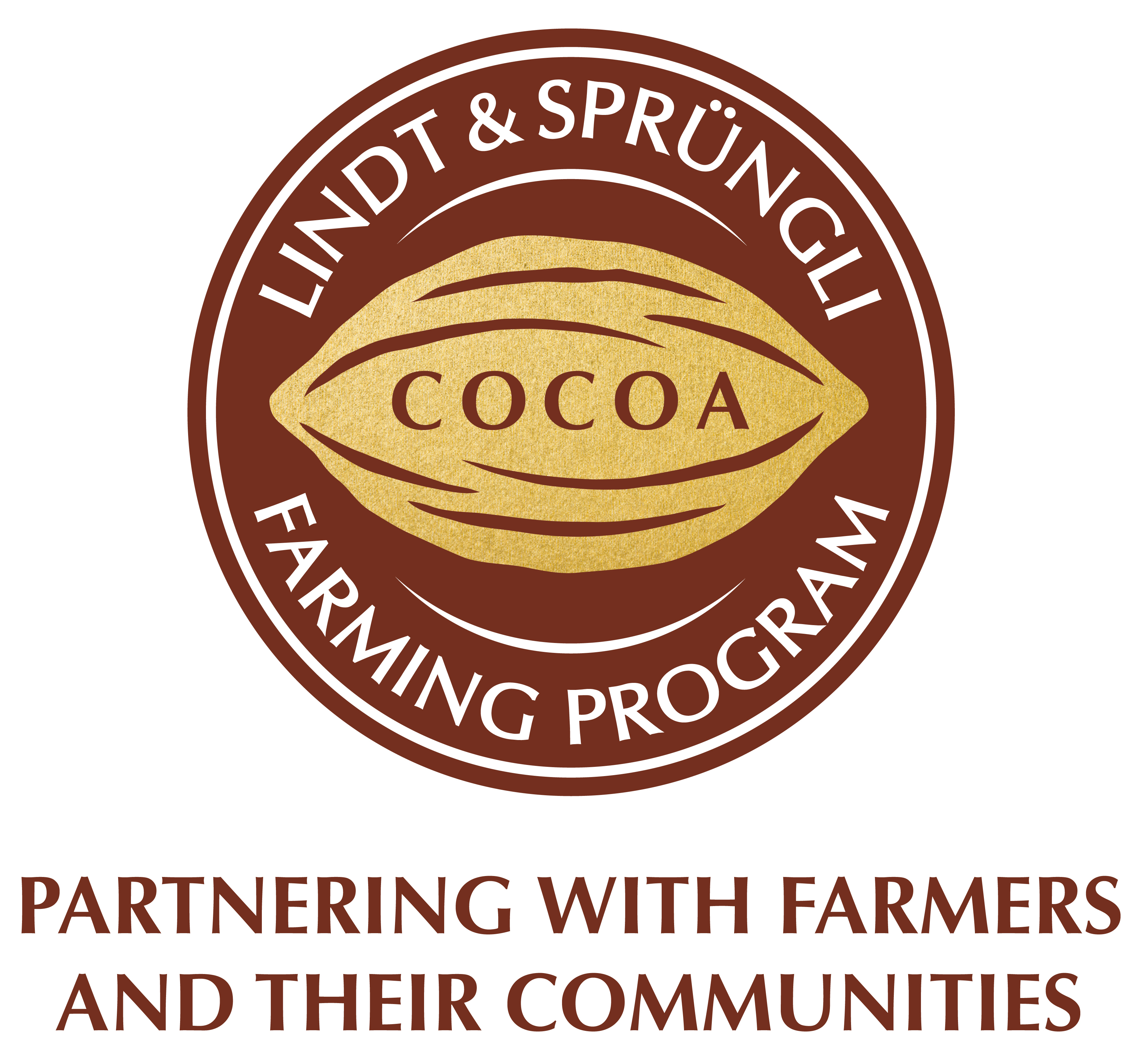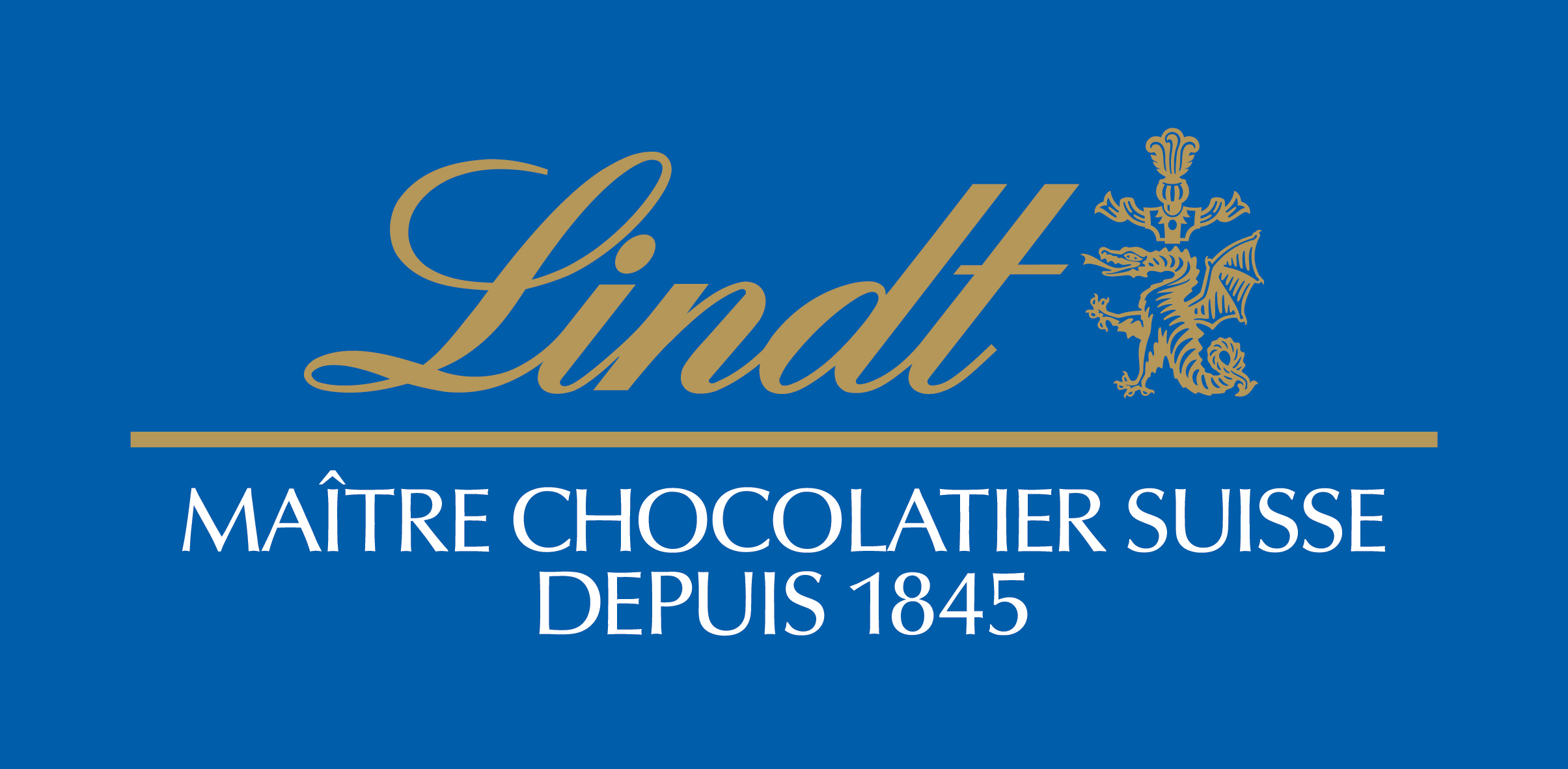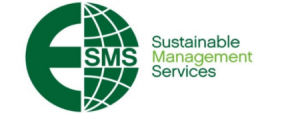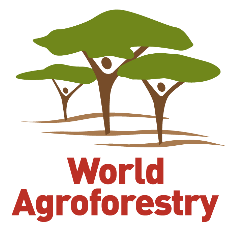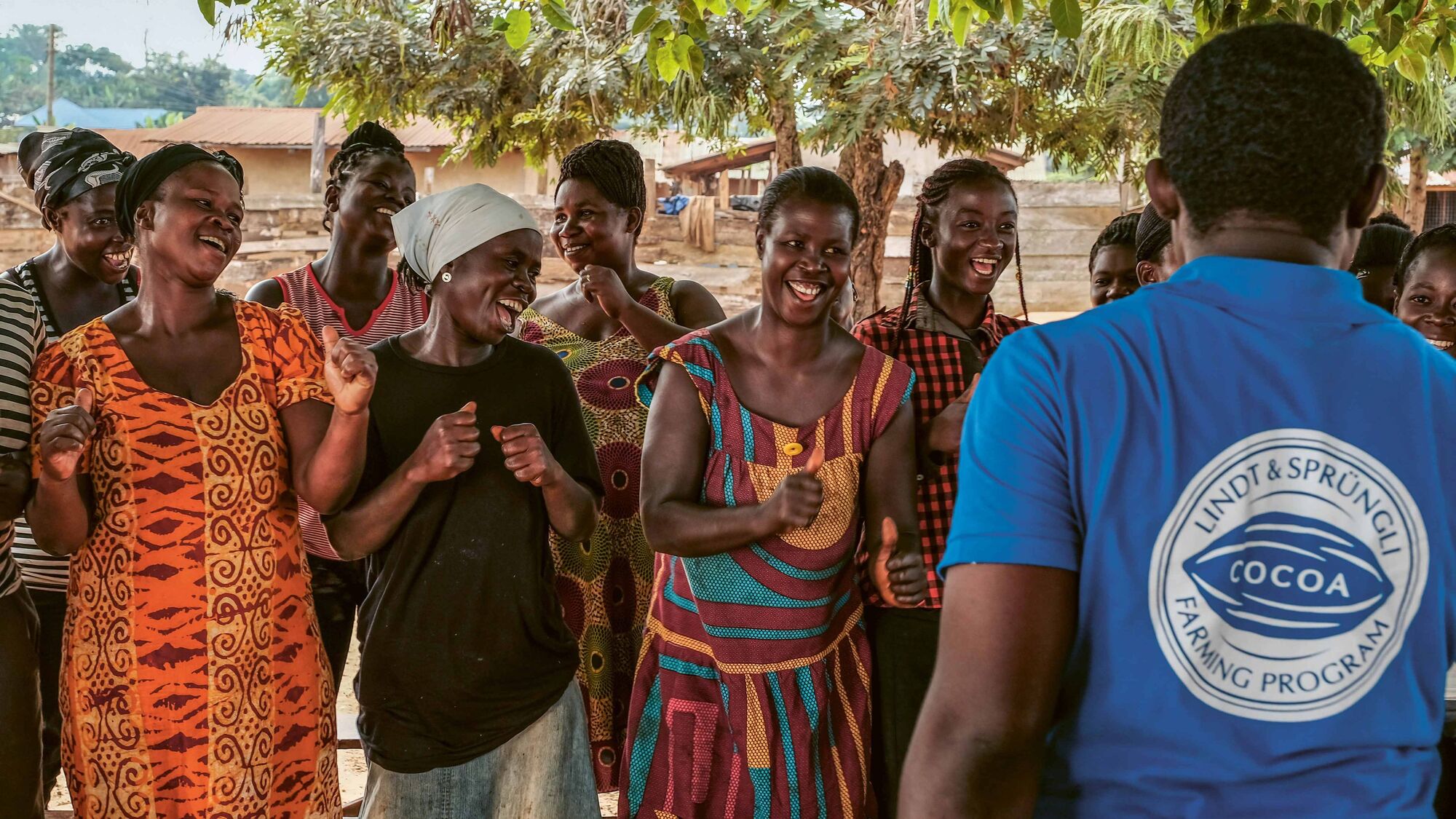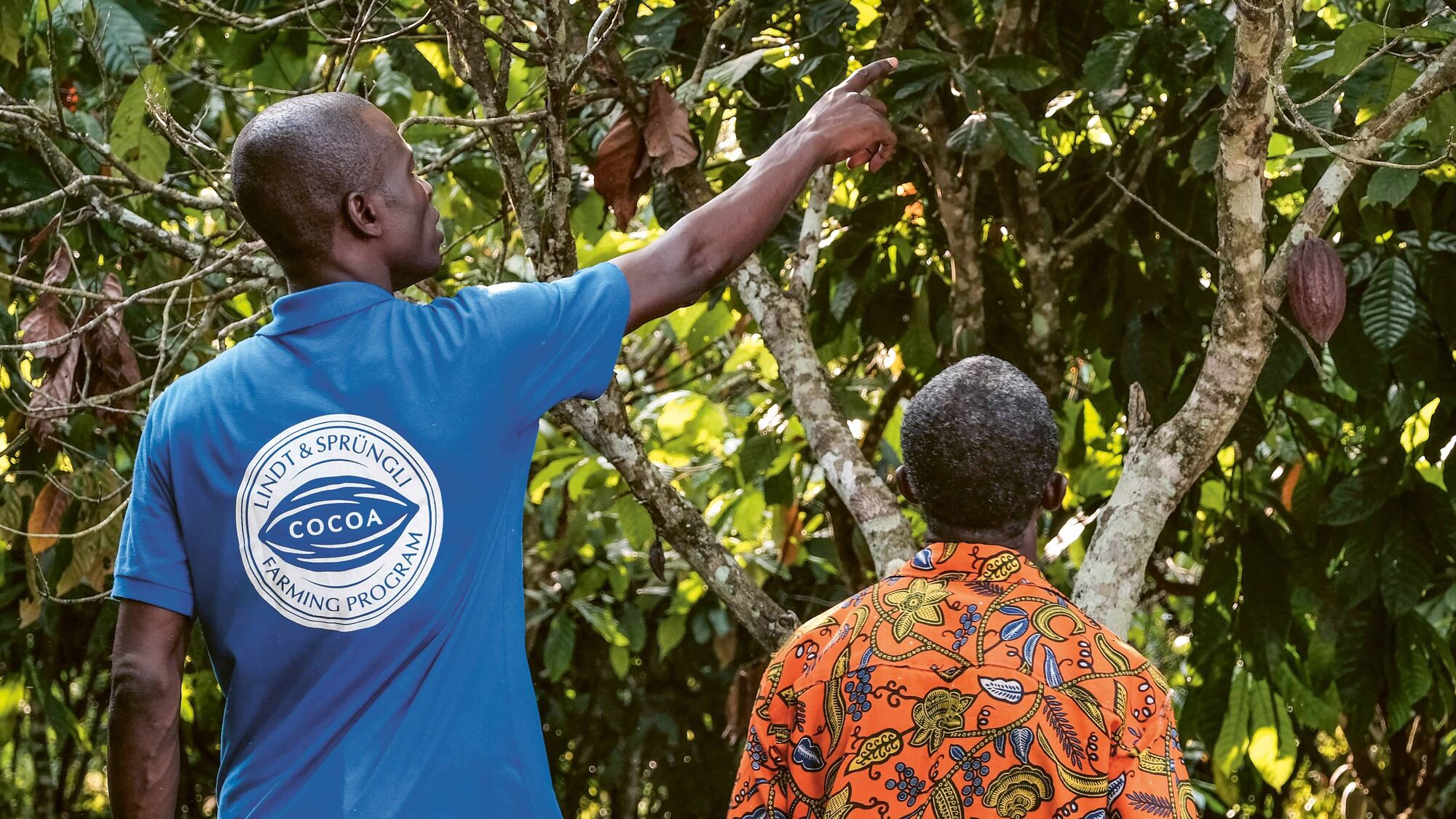A holistic approach to improving cocoa farmer livelihoods
What the project was about
In 2008, Lindt & Sprüngli set up its own sustainability programme for cocoa: the Lindt & Sprüngli Farming Program. 100% of the cocoa beans in Lindt & Sprüngli's chocolates come from the Farming Program (excluding Russell Stover). In 2021, Lindt & Sprüngli expanded the programme from cocoa beans to include cocoa butter from the Ivory Coast. Through the Farming Program, Lindt & Sprüngli aims to create decent and resilient livelihoods for cocoa farmers and their families and to encourage more sustainable farming practices. To achieve this vision, the Lindt & Sprüngli Farming Program implements measures to increase productivity, diversify income, improve community infrastructure, reduce the risk of child labour, address deforestation and conserve biodiversity.
The project partners recognize that sustainability in the cocoa value chain largely depends on the well-being of cocoa farmers. Therefore, the overall goal of the project was to improve the resilience of smallholder cocoa farmers. This was aimed to be achieved by implementing a variety of activities that were tailored to the capacities and needs of the respective farmer through a data-driven approach. This project contributed to the goal of the SWISSCO Roadmap 2030 to increase the living income of cocoa farmers.
“The project did not only help me to improve my cocoa production but has enabled me to set aside resources to grow other crops. This has made my family a direct beneficiary of additional livelihood through access to cash to support the revenue we receive from cocoa sales. It has been beneficial to my household since I started growing yam and garden eggs in addition to cocoa.”
What was done
Increasing the resilience of farming households was to be achieved through five components:
(1) Increasing farm productivity sustainably: All farmers in the Farming Program were trained or coached in selected good agricultural and environmental practices. These practices included, among others, pruning, weeding, crop and pest management, shade tree and cocoa harvest management as well as soil and health management. Farmers also received a mix of both timber species and fruit trees to plant as shade trees.
(2) Diversifying household incomes: Some farmers, in addition, received training on food crop production, animal rearing or off-farm income activities to limit farmers’ over-reliance on income from cocoa cultivation.
(3) Support with building and securing assets: Through the formation and support of Village Savings and Loans Associations in several communities, it was intended to improve the farmers’ ability to save, access credit and asset acquisition.
(4) Developing a business model for product and service delivery: To tailor the projects’ activities to the needs of the individual farmers, they were to be grouped into segments to participate in activities according to their needs and level of entrepreneurial development. The project piloted the introduction of so-called community service groups to provide pruning services to cocoa farmers.
(5) All farmers received volume-based cash premiums, and several deprived communities benefitted from investments in community infrastructure, providing access to basic services like water or education. All households were covered by a Child Labor Monitoring & Remediation System (CLMRS). These programs are embedded in company supply chains to identify and address child labour.
What the project achieved since the start of the program
The results listed below refer to the entire project phase:
(1) Farmers who received both coaching and Farm Development Plans (FDP) – a farm investment plan that takes in to account the unique situation of the farm and the farming family – were able to increase the productivity of the cocoa productivity by 70 kg/ha (statistically significant).
(2) The project contributed to a greater diversification of household incomes and thus to the resilience of the farming community.
(3) The measures to increase the area under cultivation using the agroforestry approach have proved effective: The agroforestry cultivation area has more than tripled from 3 000 to 11 000 hectares.
(4) The number of households using savings accounts has doubled. The project has been particularly successful in supporting: Their number has more than tripled from under 900 to over 3 000.
(5) Households that participated longer in the Lindt & Sprüngli Farming Program generally adopt a greater number of good practices, see annual increases in yields, earn higher incomes, gain resilience, and are less dependent on cocoa cultivation.
What didn’t work or had unintended consequences
The average cocoa yields of all assessed farmers have decreased since 2019. There have been two major contextual challenges that have affected farmers’ yields and increased farmers’ financial stress: high inflation and climate change. High inflation rates have increased farmers’ costs of living and cost of production.
In practice, this means that farmers compromise on food intake, sell assets and either reduce investments in farming and/or other businesses or increase their debt.
Climate change, in turn, leads to an increased incidence of pests and diseases such as cocoa swollen shoot virus disease.
In terms of specific activities, there were three additional challenges during the project. Firstly, cash and labour constraints as well as inadequate input delivery by the government affected the adoption of good agricultural practices.
Secondly, cash constraints, poor infrastructure, and lack of markets constrain the adoption (and impact) of non-cocoa income-generating activities. Thirdly, the seasonal cycle of cocoa reduced the number of loans handed out by Village Savings and Loans Associations as everyone needed the loan at the same time.
Interview with Christian Mensah, from the Lindt & Sprüngli Farming Program
Christian Mensah, in what ways were the project’s approaches new and innovative?
The main innovation was to develop targeted products and services, such as pruning services, to support production of different farmers, to help deliver customized advice, and to offer services at scale to enable improved farm production and digital premium payments.
What has Lindt learned through the project?
Firstly, the intervention intensity influences the outcomes. By combining interventions (group training with coaching and Farm Development Plans, Village Savings and Loans Associations with income generating activities) there is a higher chance to increase effects on yield, number of income sources and resilience. The type and combination of interventions need to be well-selected and coordinated.
Secondly, practical training on off-farm income-generating activities contributes to the rural economy. Access to markets is key to this success.
Thirdly, farmers have limited resources to invest in their farm maintenance or income-generating activities. They run the risk to be indebted and/or do not adopt the practices or activities. This hinders them in their way out of poverty and improves their resilience. To increase overall household income, access to larger loans as well as training in financial management, record keeping, and savings is key.
Village Savings and Loans Associations are promising for improving access to finance, but may not yet be fully equipped for agricultural context such as seasonality of availability and demand of money. Furthermore, the demand for loans is not constant throughout the year. As far as this is concerned, strategies must be developed.
Fourthly, different interventions have different impacts on different groups of people because people have different access to labour, land, economic resources, time, inputs, knowledge et cetera. A targeted and segmented approach is expected to increase outcomes.
What do you recommend to other stakeholders implementing similar projects?
Farmers’ knowledge and assets vary widely, and farming families find themselves in very different local circumstances. Only if this is considered in the measures can living conditions be changed effectively and efficiently. For a change to happen, many preconditions need to be met. A well-chosen set of interventions brings more change than scattered activities.
Farming families face many structural challenges. To overcome these, cooperation with other stakeholders and joint efforts are required.
What are the next steps?
Current challenges such as high inflation, climate change, high incidence of pests and diseases, inadequate input provision by government services or lack of labour remain. The structures created under the project will remain in place, but the need for additional investment and support to address new challenges prevents a phasing out of the project in the near future.
We are working towards focusing activities geographically and thereby increasing effectiveness and efficiency through the strategic combination of interventions.
How is it ensured that the project has not only short-term but long-term effects?
The following measures will be considered to strengthen the project’s sustainability after its end:
Firstly, we’ll mainstream key results, lessons, and best practices into the Farming Program. For example, work with partners of the Farming Program to leverage, allowing us to build partnerships for scaling up interventions. This includes access to financial services through Village Savings and Loans Associations and group empowerment.
Secondly, we’ll provide learning platforms to promote and share lessons and best practices across partners.
Thirdly, we’ll conduct further studies to design an applicable farmer segmentation model to prove the concept and business case for farmers who are willing and able to pay for the services of the Community Service Groups. In the next program phase, various mechanisms that involve savings and pre-payment will be tested. If they prove successful, they will be replicated together with other partners.
Organisations involved
